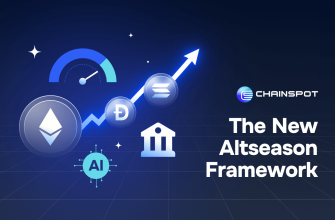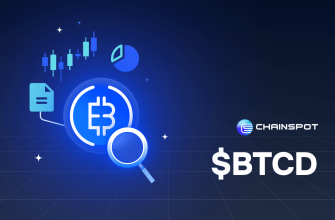- 1) First principles: what a wallet really is
- 2) The taxonomy (so choices make sense)
- A) Custodial vs. non-custodial
- B) Hot vs. cold
- C) How keys are controlled
- D) Chain support
- 3) Shortlist of popular wallets (2025 snapshot)
- EVM–first (hot)
- Solana–first (hot)
- Bitcoin–first (hot + desktop)
- Account-abstraction / smart wallets (EVM)
- Hardware (cold signers)
- Multi-chain retail (all-in-one apps)
- Enterprise custodial / MPC (for teams that need policies)
- 4) Criteria that matter (and which ones are vanity)
- 5) Deep dives: what the popular wallets are actually good at
- MetaMask (EVM)
- Rabby (EVM)
- Coinbase Wallet
- Rainbow
- Zerion Wallet / OKX Wallet / Trust Wallet / Exodus
- Phantom (Solana)
- Solflare / Backpack (Solana)
- Bitcoin: Sparrow / Electrum / Green / Nunchuk
- Safe (multisig smart wallet)
- Argent (AA)
- Hardware: Ledger / Trezor / Keystone / BitBox02 / Coldcard / Lattice
- 6) Playbooks: recommended setups by use case
- A) The Active Trader (DEX/perps, multichain)
- B) The DeFi Generalist (LPs, airdrops, missions)
- C) The NFT Collector
- D) The Long-Term Saver (set it and forget it)
- E) The DAO / Small Team Treasurer
- 7) Setup hygiene that prevents most disasters
- 8) Comparison matrix (distilled)
- 9) Frequently asked wallet questions
- 10) Real-world moves you’ll make (and how to keep them cheap)
- 11) Step-by-step: a clean initial setup (60–90 minutes)
- 12) “Good, better, best” wallet stacks (quick templates)
- 13) Common wallet mistakes (and quick fixes)
- 14) The future (so you aren’t surprised in 2026)
- 15) Final checklist (print this)
- Closing
Crypto has a wallet problem: there are too many choices and too little clarity about trade-offs. Hot vs cold, seed vs seedless, EVM vs Solana vs Bitcoin, multisig vs MPC, account abstraction, mobile vs desktop, extension vs hardware… and half the “Top 10” lists read like ad inventory.
This guide is a straight, vendor-neutral walk-through of the wallet landscape as it stands in late-2025. You’ll get:
-
A clear model for threats and trade-offs
-
The major wallet categories and when to use each
-
A deep dive on popular options (pros, cons, gotchas)
-
Practical setups by user type (trader, NFT collector, DAO, long-term saver)
-
A short list of non-negotiable safety habits
-
A comparison matrix you can share with your team
When you switch chains, you’ll need gas and the right token right now. Don’t donate edge to bridge/slippage bps. Chainspot routes swap + bridge in one click, finds the cheapest path, and credits cashback (plus referrals if your friends route via your link).
Try it: https://app.chainspot.io
1) First principles: what a wallet really is
A “wallet” does three jobs:
-
Key management — create, store, and use your private keys (or key shares).
-
Transaction building — construct and sign messages/transactions.
-
Interface — show balances/collectibles, connect to apps, and prevent you from shooting yourself in the foot.
Everything else is packaging.
Before comparing brands, fix your threat model:
-
Casual user: protect against phishing and phone/PC loss.
-
Active DeFi trader: protect against approval drain, MEV-bait, malicious contracts, and browser supply-chain risk.
-
Long-term saver: protect against theft and self-loss (forgotten seed, accidental wipe).
-
Teams/DAOs: protect against one-person compromise (shared control, policy, limits).
-
Enterprise: protect against insider risk and process failure; you’ll want approvals, policies, audit logs.
You’ll mix tools. Expect at least two wallets in your stack: one “daily driver” (hot) and one “deep cold” (hardware or multisig/MPC).
2) The taxonomy (so choices make sense)
A) Custodial vs. non-custodial
-
Custodial: a company holds your keys. Easy recovery, integrated on/off-ramp. You trust their solvency/opsec.
-
Non-custodial: you (or your group) hold the keys. Maximum sovereignty, maximum responsibility. This guide focuses here.
B) Hot vs. cold
-
Hot: key (or a share) touches an online device (browser extension, mobile app). Fast; higher attack surface.
-
Cold: key kept offline (hardware wallet, air-gapped signer). Slower; far safer for long-term funds.
C) How keys are controlled
-
Single-sig (seed phrase): one secret controls it all. Simple, risky if mishandled.
-
Multisig: M-of-N owners must co-sign. Great for teams/treasuries.
-
MPC (multi-party computation): one logical key split across devices/services; no full key ever exists in one place. Good recovery UX, enterprise controls.
-
Account Abstraction (AA): smart-contract wallets with programmable security (session keys, spending limits, social recovery, passkeys).
D) Chain support
-
EVM (Ethereum/L2s/Base/Arbitrum/OP/Linea/Polygon/etc.)
-
Solana (Solana-specific wallets)
-
Bitcoin (UTXO-centric tooling)
-
Others (TON, Sui, Aptos, Cosmos SDK chains) — huge space; we’ll spotlight mainstream picks.
3) Shortlist of popular wallets (2025 snapshot)
These are widely used, actively maintained, and easy to recommend with caveats. It’s not exhaustive and order ≠ ranking.
EVM–first (hot)
-
MetaMask — the default EVM extension/mobile. Massive dApp compatibility, custom networks, WalletConnect. Downsides: noisy UI if you install every network, approval hygiene is your job.
-
Rabby — trader-friendly extension with pre-swap risk checks, auto-network switching, and clear simulation. Excellent approval/tx previews.
-
Coinbase Wallet — mobile + extension, good UX, strong brand. Useful if you use Coinbase CEX; beware mixing “custodial mindset” with non-custodial actions.
-
Rainbow — clean NFT-centric UX on mobile; now supports L2s well.
-
Zerion Wallet — portfolio view + multi-chain, streamlined swaps via WalletConnect.
-
OKX Wallet — broad multi-chain support, built-in swaps/bridges, powerful for mobile users; learn to disable what you don’t use.
Solana–first (hot)
-
Phantom — the “MetaMask of Solana”; great NFT/gallery features, Ledger support, now supports EVM-ish chains in beta for some users.
-
Solflare — power-user Solana features, Ledger flows, staking UX.
-
Backpack — xNFT paradigm and strong dev traction; good if you’re deep in Solana ecosystems.
Bitcoin–first (hot + desktop)
-
Sparrow (desktop) — advanced PSBTs, coin control, multisig; pairs with Coldcard, Trezor, Ledger.
-
Electrum (desktop) — battle-tested; power-user features.
-
Blockstream Green (mobile) — 2FA-style multisig with Green servers; easy for new users.
-
Nunchuk (mobile/desktop) — great for collaborative multisig, inheritance planning.
Account-abstraction / smart wallets (EVM)
-
Safe (formerly Gnosis Safe) — industry-standard multisig smart wallet; modules for spending limits, guards; perfect for DAOs/teams and serious personal security (e.g., 2-of-3 with a hardware wallet + phone + spouse).
-
Argent — mobile AA wallet with social recovery, daily limits, DeFi integrations; strong for newcomers who fear seed-loss.
-
Sequence / Biconomy AA stacks — for apps that want gas sponsorship, session keys, passkeys.
Hardware (cold signers)
-
Ledger (Nano S Plus / Nano X / Stax) — big ecosystem, EVM/Solana/BTC support; learn how to verify addresses on-device.
-
Trezor (Safe 3 / Model T) — open-source firmware; clean flow; supports passphrases (25th word).
-
Keystone — air-gapped QR flows; good with multisig and many chains.
-
BitBox02 — open-source, compact; popular with Bitcoiners/Ethereum users.
-
Coldcard — Bitcoin-only, advanced security, PSBT-first; hard-mode but beloved by cold-storage purists.
-
GridPlus Lattice — EVM-first secure keypad device; convenient for heavy on-chain signing with a big screen.
Multi-chain retail (all-in-one apps)
-
Trust Wallet — huge chain coverage, simple UX, large user base.
-
Exodus — design-first desktop/mobile, easy staking on some chains, good for beginners; not a power-trader tool.
Enterprise custodial / MPC (for teams that need policies)
-
Fireblocks, Copper, Coinbase Custody, BitGo — policy controls, approvals, insurance conversations; not for retail, but many teams park treasury here and use Safe for operational wallets.
-
MPC consumer (e.g., leveraging iCloud/Google Drive share + device share) — increasingly common; seedless feel with non-custodial control if designed correctly.
4) Criteria that matter (and which ones are vanity)
-
Security model
-
Hot vs cold, single-sig vs multisig/MPC, audited code, open-source vs proprietary, secure enclave use, address verification on a screen you control.
-
-
Recovery & resilience
-
Seed phrase (BIP-39) with passphrase support; social recovery (guardians); MPC recovery without centralized custody risk; inheritance planning.
-
-
Chain & asset coverage
-
EVM + your favorite L2; Solana; Bitcoin; niche chains you actually use.
-
-
Transaction clarity
-
Pre-sign simulation, explicit warnings (approvals, permit2, setApprovalForAll), human-readable decoding.
-
-
Approvals hygiene
-
Built-in revoke tools or easy links; allow spend limits instead of infinite approvals.
-
-
Connectivity
-
WalletConnect v2, browser extension injection, mobile deep links, dApp compatibility, AA/session key support.
-
-
Hardware pairing
-
Ledger/Trezor/Keystone/BitBox compatibility, PSBT flows, Solana signing on hardware.
-
-
Team features
-
Multisig threshold, role-based policies, spending limits, module ecosystem (Safe).
-
-
DX (developer experience)
-
AA SDKs, sponsor gas, session keys, paymasters, chain lists; this matters if you’re building.
-
-
Privacy
-
Telemetry opt-outs, RPC choices (your own node / privacy RPC), no hidden analytics.
-
-
Support & cadence
-
Release frequency, incident transparency, migration tooling (e.g., export keys, import seeds).
-
“Swap built-in”, “buy crypto” and fiat on-ramps are nice-to-have, but note: in-wallet swaps sometimes add invisible fees. For size or frequent use, an aggregator is usually cheaper.
If you often switch chains for airdrops, farming or listings, your bottleneck is cost of moving. Keep it microscopic: https://app.chainspot.io (swap+bridge, one click, cashback + referrals).
5) Deep dives: what the popular wallets are actually good at
MetaMask (EVM)
Best for: maximum compatibility, every EVM dApp under the sun.
Strengths: network flexibility, WalletConnect, mobile + extension, Ledger/Trezor pairing.
Watch-outs: noisy networks, approval sprawl, many scams target MM users. Install from official source; use separate browser profile; consider Rabby for day-to-day and keep MM installed only as a fallback.
Rabby (EVM)
Best for: active DeFi users and traders who want pre-sign simulations and safer defaults.
Strengths: auto chain switching, clear warnings, tx simulation, easy approval views.
Watch-outs: still an extension (hot). Pair with hardware for meaningful size.
Coinbase Wallet
Best for: mobile-first users and folks in the Coinbase ecosystem.
Strengths: solid UX, name service integration, good NFT gallery.
Watch-outs: don’t confuse it with a custodial Coinbase account; you are your keys. Use approval limits and revoke often.
Rainbow
Best for: NFT collectors and EVM casuals who want a clean interface.
Strengths: delightful design, good discovery for collectibles, L2 support.
Watch-outs: not a pro trader’s workstation; pair with another for advanced DeFi.
Zerion Wallet / OKX Wallet / Trust Wallet / Exodus
Best for: broad chain coverage, starter users, portfolio tracking.
Strengths: multi-chain, built-in swaps, easy staking on some networks.
Watch-outs: in-app swaps can be pricier than dedicated aggregators; advanced approval controls vary.
Phantom (Solana)
Best for: Solana users of all stripes.
Strengths: polished UX, NFT gallery, Ledger support, smooth dApp connections.
Watch-outs: same hot-wallet caveats; pair with Ledger for real money; verify addresses on device.
Solflare / Backpack (Solana)
Best for: power users (Solflare), xNFT and dev-leaning folks (Backpack).
Strengths: staking flows, program-rich integrations, Backpack’s xNFT ecosystem.
Watch-outs: learn Solana’s approval semantics; don’t mindlessly “approve”.
Bitcoin: Sparrow / Electrum / Green / Nunchuk
Best for: from advanced sovereignty (Sparrow/Electrum) to beginner safety (Green) to collaborative multisig (Nunchuk).
Strengths: PSBT workflows, coin control, multisig & policy features.
Watch-outs: Bitcoin UX differs radically from EVM/SOL; read before clicking.
Safe (multisig smart wallet)
Best for: teams/DAOs/whales; also excellent for personal security via 2-of-3 setup.
Strengths: threshold control, modules (spending limits, guards), audit trail, batched tx.
Watch-outs: smart-contract wallet → pay gas; keep a small ETH (or chain gas) buffer on the Safe itself. If you lose 2-of-3 keys, funds are stuck.
Argent (AA)
Best for: newcomers who fear seed loss; DeFi without mobile-hostile UX.
Strengths: social recovery, daily limits, guardians.
Watch-outs: you must actually assign guardians and test recovery; don’t put it off.
Hardware: Ledger / Trezor / Keystone / BitBox02 / Coldcard / Lattice
-
Ledger: broadest app ecosystem; confirm addresses on device; keep firmware up-to-date.
-
Trezor: open-source, easy passphrase flows, great for EVM/BTC.
-
Keystone: air-gapped QR signing, excellent with multisig/Safe; convenient if you hate cables.
-
BitBox02: compact, open-source; good blend for BTC/EVM.
-
Coldcard: Bitcoin-only, PSBT masterclass; pair with Sparrow for elite cold storage.
-
Lattice: EVM powerhouse with a large screen—nice if you sign many tx and want to see what you’re doing.
Golden rule: for amounts you truly care about, use a hardware signer (or a Safe multisig with one hardware signer among the keys). Period.
6) Playbooks: recommended setups by use case
A) The Active Trader (DEX/perps, multichain)
Goals: speed, clarity at sign time, cheap chain rotations, minimal approval risk.
Stack:
-
Rabby (daily driver) + hardware (Ledger/Trezor/Keystone) for large signatures.
-
Safe (2-of-3) as your “vault” for profits and long-term holdings.
-
Separate browser profile; disable unused extensions.
-
Approval limits on volatile tokens; weekly revoke ritual.
Workflow:
-
Preview every swap with simulation; avoid signing opaque
permit2/infinite approvals. -
Prefer RFQ/limit to blind market buys; MEV-protected routes for size.
-
Rotate chains via Chainspot to compress swap+bridge costs and accumulate cashback: https://app.chainspot.io.
B) The DeFi Generalist (LPs, airdrops, missions)
Goals: broad chain coverage, cheap gas, safe approvals, time-boxed farming.
Stack:
-
MetaMask or OKX Wallet / Trust for coverage, plus Rabby for safer daily use.
-
Ledger for adding/removing real size from LPs.
-
Argent (optional) if you want social recovery on an EVM account.
Workflow:
-
Pre-fund a gas buffer on the next chain before the farm goes live.
-
Keep a simple airdrop/farming journal (what wallet did what).
-
Bridge with Chainspot; you’ll often do this dozens of times → cashback compounds.
C) The NFT Collector
Goals: avoid approval drains, sign safely, organize.
Stack:
-
Rainbow (mobile) + Rabby (extension) for browsing/minting; Ledger for high-value transfers.
-
Phantom if you’re Solana-heavy.
Workflow:
-
Mint with a fresh “mint wallet” then transfer to your vault wallet (hardware).
-
Revoke marketplace approvals you no longer need.
-
Always verify collection contracts—fake collections abound.
D) The Long-Term Saver (set it and forget it)
Goals: don’t get hacked; don’t lose your own keys; plan for heirs.
Stack:
-
Hardware (Trezor/Ledger/BitBox02/Keystone) + passphrase (25th word) stored separately.
-
Or a Safe 2-of-3 with one key in a bank box, one with you, one with a trusted relative/attorney.
-
Optional: Nunchuk (BTC multisig) for inheritance workflows.
Workflow:
-
Two paper backups: seed and passphrase at different locations; test recovery once.
-
Firmware updates quarterly (from official sites).
-
Move funds rarely; verify addresses on device every time.
E) The DAO / Small Team Treasurer
Goals: no single point of failure; policy checks; audit trail.
Stack:
-
Safe with 2-of-3 or 3-of-5; add spending limits and guards.
-
Signers each use hardware (no hot-only signers).
-
Use WalletConnect / Safe Apps for spending; keep a cold signer for policy changes.
Workflow:
-
Define roles: who proposes, who signs, who manages modules.
-
Emergency pause or “circuit breaker” module if supported.
-
Keep gas buffers on the Safe; nothing worse than a multisig unable to pay fees.
7) Setup hygiene that prevents most disasters
-
Separate browser profile for your wallet; disable random extensions.
-
Verify installers (hash/signature) and double-check extension publishers.
-
Never import seeds to a webform; use hardware or trusted apps only.
-
Passphrase (25th word): powerful, but losing it = funds gone. Document carefully.
-
Address verification: confirm on the hardware screen.
-
Approvals: prefer spend-limit approvals; review and revoke monthly (or after each high-risk dApp).
-
RPC privacy: use your own provider or reputable privacy RPC for sensitive activity.
-
Backups: laminated or steel backups; geographically separated; test recovery once per year.
-
Social engineering: no “support agents” DM you recovery steps. Ever.
8) Comparison matrix (distilled)
Snapshot of common needs. “✔︎” = strong fit, “○” = usable with caveat, “—” = not a focus.
| Need \ Wallet | MetaMask | Rabby | Coinbase W. | Rainbow | Zerion | OKX W. | Phantom | Solflare | Safe | Argent | Ledger/Trezor | Keystone | Sparrow/Electrum |
|---|---|---|---|---|---|---|---|---|---|---|---|---|---|
| Daily EVM trading | ○ | ✔︎ | ○ | ○ | ○ | ○ | — | — | ○ | ○ | ○(with pair) | ○(with pair) | — |
| Pre-sign simulation | ○ | ✔︎ | ○ | ○ | ○ | ○ | — | — | n/a | n/a | n/a | n/a | n/a |
| Solana focus | — | — | — | — | — | — | ✔︎ | ✔︎ | — | — | ○(with app) | ○(QR flows) | — |
| Bitcoin focus | — | — | — | — | — | — | — | — | — | — | ○ | ○ | ✔︎ |
| NFT UX (EVM) | ○ | ○ | ○ | ✔︎ | ✔︎ | ○ | — | — | — | — | — | — | — |
| Multisig / team | — | — | — | — | — | — | — | — | ✔︎ | ○(guardians) | — | — | ✔︎(BTC multisig) |
| Social recovery | — | — | — | — | — | — | — | — | ○(modules) | ✔︎ | — | — | — |
| Hardware pairing | ✔︎ | ✔︎ | ✔︎ | ○ | ○ | ○ | ✔︎ | ✔︎ | n/a (it is the signer set) | ○ | — | — | ✔︎(BTC PSBT) |
| Chain coverage (retail) | ✔︎ | ✔︎ | ○ | ○ | ○ | ✔︎ | Solana | Solana | EVM | EVM | N/A | N/A | BTC |
| Learning curve | Med | Low | Low | Low | Low | Low | Low | Med | Med | Low | Med | Med | Med/High |
Notes:
-
Hardware pairing with Phantom/Solflare requires specific flows/firmware; test with small sums first.
-
Safe is a smart wallet; hardware devices are signers for it, not “paired apps.”
-
For AA wallets, gas/payment UX may differ (sponsored gas, paymasters).
9) Frequently asked wallet questions
Is a hardware wallet “unhackable”?
No. It dramatically reduces risk, but you can still lose funds to phishing (signing bad tx), physical coercion, or supply-chain scams. Always verify on-device; never import your seed anywhere else.
Is MPC safer than multisig?
Different tools. Multisig is transparent on-chain (great for DAOs/teams). MPC hides the multi-party ceremony (good privacy/UX), but you depend on vendor reliability and recovery design. Both can be excellent.
Do I really need two wallets?
Yes. Keep a daily hot wallet for experimentation and a vault (hardware or Safe) for meaningful funds.
Can I recover if I lose my phone/PC?
With a seed or AA guardians: yes (if you did setup properly). If you didn’t back up or assign guardians, expect pain.
Which single wallet should beginners install?
For EVM: Rabby (daily) + a plan to add Ledger/Trezor within a week. For Solana: Phantom + Ledger. For long-term: start with hardware.
10) Real-world moves you’ll make (and how to keep them cheap)
-
New chain airdrop: you’ll need native gas + a starter stable. Use Chainspot to swap+bridge in one step; avoid paying twice.
-
DeFi rotation: claim rewards on Chain A, bridge to Chain B, buy token. Doing this manually can cost 2–3× more than an aggregated route.
-
Cash-out to vault: profits → Safe or hardware address. Keep a small gas buffer on the destination or you’ll get stuck.
👉 Bridge & swap smarter (earn cashback + referrals): https://app.chainspot.io
11) Step-by-step: a clean initial setup (60–90 minutes)
-
Pick your vault: hardware or Safe 2-of-3 (hardware + phone + paper key).
-
Initialize hardware: generate seed on-device; write on paper/steel; add a passphrase; store separately.
-
Test recovery: restore from seed on a fresh device (or a dummy restore) to ensure you wrote it right.
-
Create a hot wallet: Rabby/Phantom.
-
Pair hardware with your hot wallet (for large tx).
-
Fund buffers: $20–50 worth of native gas on the chains you use; a few hundred USDC/USDT parked where you trade.
-
Hygiene: new browser profile; pin extensions; remove junk.
-
Security settings: enable require-password, auto-lock, block non-approved sites (where supported).
-
Approvals: mint/LP with hot; move value to vault after. Revoke old approvals monthly.
-
Journal: write what you set up, where backups are, and how heirs can reach it (without putting seed in the doc!).
12) “Good, better, best” wallet stacks (quick templates)
Good (newcomer):
-
Mobile: Phantom (Solana) / Rainbow (EVM)
-
Desktop: Rabby
-
CTA: keep chain gas topped up via Chainspot
Better (retail trader):
-
Daily: Rabby + hardware for big tx
-
Vault: Safe 2-of-3 (hardware + phone + paper/hardware)
-
Mobile: Rainbow / Phantom
-
Habit: monthly revoke session; route swaps/bridges via Chainspot (cashback adds up)
Best (team/DAO):
-
Treasury: Safe 3-of-5 with spending limits & guards
-
Ops: per-team Safe 2-of-3
-
Signers: hardware only
-
Routing: all cross-chain funding through Chainspot to keep accounting tidy (export receipts) and fees minimal
13) Common wallet mistakes (and quick fixes)
-
Infinite approvals to random contracts → Use spend limits and revoke after use.
-
Mixing work & degen in one wallet → Split profiles/wallets; assume one will eventually get dinged.
-
Storing seed in cloud notes → Move to physical; if you must use digital, encrypt and split (Shamir/secret sharing), but do it right.
-
Copy-pasting addresses without verification → Always verify on a hardware screen for large moves.
-
Bridging at peak gas → Pre-fund; if you forgot, at least aggregate the route (Chainspot) to compress bps.
14) The future (so you aren’t surprised in 2026)
-
Account Abstraction everywhere: passkeys, sponsored gas, session keys become normal. You’ll see fewer seeds, more “login-like” flows—still non-custodial under the hood.
-
MPC for consumers: iOS/Android secure enclaves + cloud shard + device shard → recovery without seed panic. Choose implementations that don’t create a stealth custodian.
-
Social recovery norms: guardians as standard, with better UX and clearer emergency playbooks.
-
Compliance layers: more wallets will offer optional compliance screens for enterprise users without compromising retail privacy.
-
Better simulation: more wallets will simulate on real mempool state and flag dangerous approvals and hidden transfers before you sign.
15) Final checklist (print this)
-
Pick two wallets: hot daily + cold vault (hardware or Safe).
-
Back up seed and passphrase separately; test recovery.
-
Use Rabby/Phantom for daily; hardware for size.
-
Approvals: limits not infinite; revoke monthly.
-
Separate browser profile; verify installers.
-
Pre-fund gas on next chain; route swap+bridge with Chainspot (cashback).
-
Keep a plain-English doc for your future self (no seeds inside).
Move between chains and dApps without leaking edge: https://app.chainspot.io
One click. Best route. Cashback and referrals for loyal users.
Closing
Choosing a wallet isn’t about brand loyalty; it’s about assembling a posture that matches your risks. For most people, that means a hot daily wallet you’re comfortable with and a cold (or multisig/AA) vault you rarely touch. The rest is habit: verify on-device, avoid infinite approvals, and keep your route costs tiny when you rotate.
Wallets are supposed to help you hold on to what you earn. The setup above will do that — and it won’t get in your way when the market moves.
Bridge & swap smarter (cashback + referrals): https://app.chainspot.io











